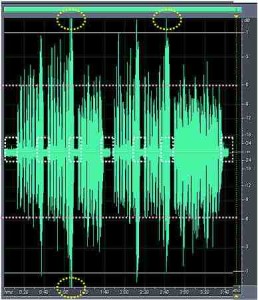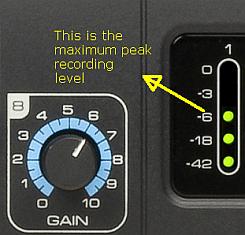Vocal recording is one of the most important tasks in the multi-track recording project that should be done carefully/correctly. It is because the artist fans will be paying MORE attention to the vocal tracks more than any other instruments in the mix. This beginner tutorial will highlight how to record vocals properly. You can do this by following the best practices of recording vocals in your digital home recording studio (using a PC, Mac, Laptop, etc). This tutorial is applicable to any recording software you will be using.
A Real Vocal Track Example – Issues Examined
Your will learn quickly how to record your vocals properly by showing a problematic vocal recording so that you will know what are these problems to avoid. I received an audio mixing request consisting of around 5 tracks (2 guitars, 2 violins and one lead vocal track). The client initially sends me the vocal track for a review. This is what the client provides (vocals start at 13 seconds after playback, but observed closely what you have noticed before the vocals, during the vocal performance and after it).
Vocal credits: Priscilla Nguyen
You will notice there is a lot of issues in the vocal track. These are the following:
a.) Significant background noise in the recording (see the hum in the first 12 seconds and that carries all throughout the track)
b.) Digital Clipping
c.) Lack of headroom, too hot vocal recording levels.
And this is the waveform of the recorded vocals described above indicating the problem points:
Legend:
a.) Yellow dotted circles are the clipped areas in the vocal waveforms; clipping in digital results to distortion which you should avoid.
b.) Dotted white rectangles are the significant background noise in the vocal recording. According to the client, this is noise due to the venting system which they have not turned off during vocal tracking.
c.) The dotted pink horizontal line at -6dBFS should be the optimum/maximum vocal peak amplitude when recording. However the vocals exceed a lot of times at this limit even exceeding 0 dBFS resulting to clipping. Below is the waveform statistics (red fonts are problem stats):
The client however is CORRECT in choosing “mono” as the recording type of the vocals and choosing 24 bits as the recording bit depth. Recording at 24-bits is a standard although some recording software defaults at 32-bit float recording. 24-bit and 32-bit float have the same accuracy (read here: 32-bit float recording depth vs. 24-bit)
But the following are the added issues:
Problem1: Peak amplitude = 0 dBFS, possibly clipped: 1582
Correct1: The peak amplitude should be -6dBFS or less. In actual and correct vocal recording, the vocal amplitudes would be allowed to vary from the quietest section (around -48dBFS) to an average level of -18dB to maximum peak amplitude of -6dBFS. You should decrease your audio interface preamp gain if it hits above -6dBFS. This would increase the possibility of distorted and clipped vocals.
The most effective way of monitoring the incoming recording levels is to look at your audio interface recording level meters. For example, in the screenshot below of Saffire Pro40, it shows a peak level of -6dB.


